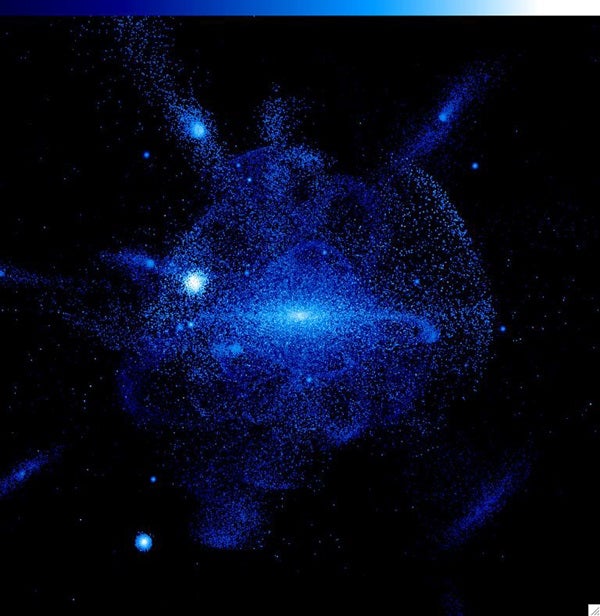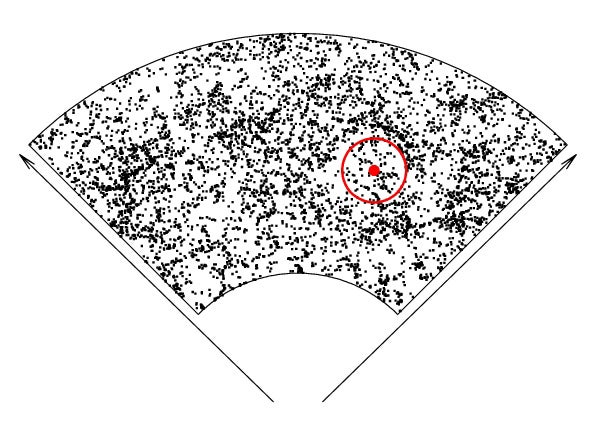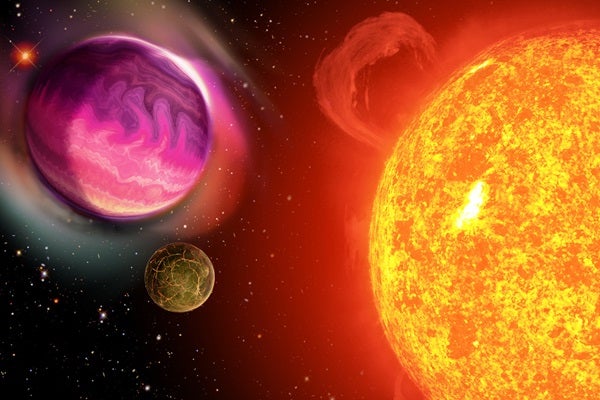During the past 8 years, the Sloan Digital Sky Survey (SDSS) and its extension (SDSS-II) have made extraordinary discoveries ranging from asteroids to the distant cosmos. Researchers announced January 10 at the American Astronomical Society meeting in Austin, Texas, that the Alfred P. Sloan Foundation of New York has approved $7 million to support a new program, called SDSS-III. With additional funding expected from collaboration members and government agencies, SDSS-III will run from mid-2008 to 2014.
Results from SDSS range from star streams in our galaxy’s halo to the largest three-dimensional map of cosmic structure. “At this meeting alone, there are nearly 200 abstracts that mention Sloan or the SDSS,” said Ohio State University’s David Weinberg.
SDSS-III comprises four coordinated projects. The largest of these, called the Baryon Oscillation Spectroscopic Survey (BOSS), will use a novel and powerful technique to study dark energy, one of contemporary science’s biggest mysteries. “Whatever the answer turns out to be, it’s going to rewrite fundamental physics,” Weinberg says.
A decade ago, astronomers made the startling discovery that the universe’s expansion is speeding up. Cosmologists attribute this acceleration to so-called dark energy, which pervades otherwise empty space and exerts repulsive gravitational force. Dark energy could be the cosmological constant proposed by Albert Einstein in 1917. Or it could be a new, exotic form of energy whose properties evolve with time.
In 2005, SDSS studies achieved one of the first clear detections of “baryon acoustic oscillations,” a feature imprinted on the clustering of galaxies by sound waves that traveled through the early universe. “They imprinted a characteristic scale on the clustering of matter, which, in turn, imprinted a scale on the clustering of matter,” Weinberg says.
This find opens up a new way of measuring cosmic distances. “So, with a large enough galaxy map, the acoustic oscillations will allows us to determine the absolute distance scale of the universe with unprecedented accuracy and precision,” Weinberg explains. Astronomers believe these measurements could reach 1-percent accuracy and extend to distances of 10 billion light-years.
SDSS-III also includes a 1-year extension of the Sloan Extension for Galactic Understanding and Exploration (SEGUE). The project, which maps the outer Milky Way, was slated to end in June. The extension will be called SEGUE-2.
A new project, called the Apache Point Observatory Galactic Evolution Experiment (APOGEE), will peer through dust-obscured regions near the galactic center. Although dust blocks light, infrared radiation can penetrate it. APOGEE will employ a unique instrument that simultaneously observes infrared emissions from 300 stars to survey 100,000 stars located in the inner galaxy.
The goal is to determine the chemical signatures of these stars. “It’s the ultimate exercise in forensic archeology,” says the University of Virginia’s Steven Majewski, because today’s stars contain elements forged and released by a previous stellar generation.
Astronomers have identified more than 250 extrasolar planets, but most are Jupiter-like gas giants that follow non-circular orbits and lie close to their parent stars.
The SDSS-III MARVELS project will search for giant planets orbiting some 10,000 stars — more than 3 times the number searched by all other telescopes to date. “By systematically monitoring such a large number of stars, MARVELS will address two of the biggest questions in planetary science: How do giant planets form, and why are so many in such unusual orbits?” explains lead researcher Jian Ge of the University of Florida.
Princeton University’s James Gunn has led the Sloan Digital Sky Survey through nearly 2 decades of construction and operation. “It’s amazing to see that the SDSS can transform scientific fields we hadn’t even conceived of 20 years ago,” he says.












